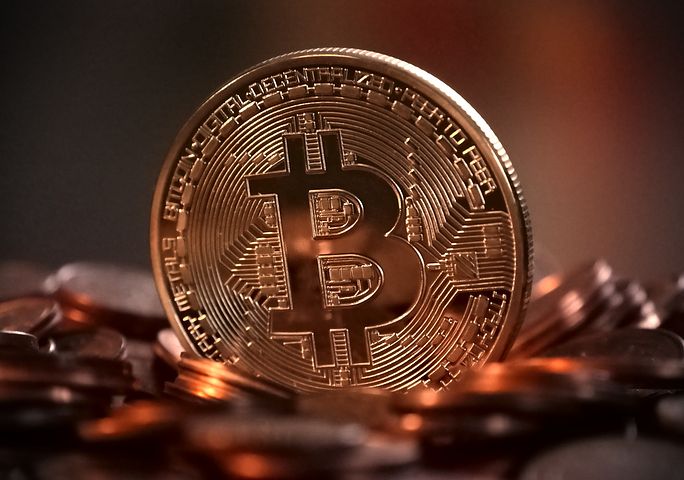
Bitcoin(BTC)
Bitcoin is a digital decentralized currency that was created in 2009 by an unknown person or group using the pseudonym Satoshi Nakamoto. Unlike traditional currencies, Bitcoin operates independently of central banks and governments, and is instead powered by a decentralized network of computers around the world.

What Is Bitcoin?
Bitcoin is a digital decentralized currency that was created in 2009 by an unknown person or group using the pseudonym Satoshi Nakamoto. Unlike traditional currencies, Bitcoin operates independently of central banks and governments, and is instead powered by a decentralized network of computers around the world.
Bitcoin transactions are recorded on a public digital ledger called the blockchain, which is maintained and verified by a network of computers. The blockchain ensures that each transaction is secure, transparent, and irreversible.
Bitcoin is limited in supply, with only 21 million Bitcoins that will ever exist. The currency can be obtained through a process called mining, in which computers solve complex mathematical problems to verify transactions and earn new Bitcoins.
Bitcoin has gained popularity as a means of payment and investment, and is accepted by a growing number of merchants and businesses worldwide. However, Bitcoin’s value is known to fluctuate widely, and the currency is also associated with risks such as theft, hacking, and regulatory uncertainty.
Bitcoin’s Blockchain Technology
Bitcoin’s blockchain technology is a digital public ledger that records all transactions of the cryptocurrency. It is a decentralized database that is maintained and verified by a network of computers around the world, rather than a central authority like a bank or government.
Each block in the blockchain contains a record of several transactions, along with a unique digital signature called a hash. Once a block is added to the blockchain, it cannot be modified or deleted, which ensures that the ledger is transparent, secure, and tamper-proof.
The blockchain allows for peer-to-peer transactions without the need for intermediaries, and also enables greater transparency, privacy, and security than traditional financial systems. It also facilitates smart contracts, which are self-executing contracts that are programmed to automatically execute when certain conditions are met.
While Bitcoin was the first cryptocurrency to use blockchain technology, other cryptocurrencies and blockchain-based applications have emerged in recent years, including Ethereum, Ripple, and Hyperledger. The potential uses of blockchain technology are still being explored, with applications ranging from supply chain management to voting systems to digital identity management.
How to Mine Bitcoin
Mining Bitcoin requires specialized hardware and software. Here are the basic steps to get started with Bitcoin mining:
- Get a Bitcoin mining rig: You’ll need specialized hardware called ASICs (Application-Specific Integrated Circuits) designed specifically for Bitcoin mining. These machines are expensive and consume a lot of electricity. It’s important to do research and find the best equipment for your budget and location.
- Join a mining pool: Mining Bitcoin on your own is difficult and may not be profitable. Instead, most miners join a mining pool where they combine their computing power with other miners to increase their chances of earning rewards. There are many mining pools to choose from, and each has its own fees and payout structures.
- Download mining software: Once you’ve joined a mining pool, you’ll need to download and install mining software that’s compatible with your mining rig. Popular mining software includes CGminer, BFGminer, and EasyMiner.
- Configure your mining software: After installing your mining software, you’ll need to configure it to connect to your mining pool and start mining. This usually involves entering your pool’s server information, username, and password.
- Start mining: Once your mining software is configured, you can start mining Bitcoin. The software will automatically use your mining rig’s computing power to solve complex mathematical problems and earn Bitcoin rewards.
- Monitor your earnings: Bitcoin mining can be profitable, but it’s important to monitor your earnings and expenses carefully. Keep track of your electricity costs, pool fees, and other expenses to make sure you’re making a profit. You can also use online calculators to estimate your potential earnings based on your mining rig’s computing power and the current Bitcoin price.
It’s worth noting that Bitcoin mining is a highly competitive industry, and profits can fluctuate based on factors like the Bitcoin price, mining difficulty, and the number of miners in the network. It’s important to do your research and carefully consider the costs and potential earnings before investing in Bitcoin mining equipment.
How Do You Buy Bitcoin?
To buy Bitcoin, you can follow these basic steps:
- Choose a Bitcoin wallet: Before buying Bitcoin, you’ll need a place to store it. A Bitcoin wallet is a digital wallet that allows you to securely store, send, and receive Bitcoin. There are many types of wallets to choose from, including mobile wallets, desktop wallets, and hardware wallets.
- Choose a Bitcoin exchange: A Bitcoin exchange is a marketplace where you can buy and sell Bitcoin. There are many reputable exchanges to choose from, including Coinbase, Binance, Kraken, and Gemini. Each exchange has its own fees, payment methods, and user interface, so it’s important to do your research and choose one that meets your needs.
- Verify your identity: To use most Bitcoin exchanges, you’ll need to verify your identity by providing your name, address, and government-issued ID. This is a necessary step to prevent fraud and comply with financial regulations.
- Deposit funds: Once your identity is verified, you can deposit funds into your exchange account using a bank transfer, credit card, or other payment method. Some exchanges may require a minimum deposit amount.
- Buy Bitcoin: Once your funds have been deposited, you can buy Bitcoin on the exchange using the funds in your account. You’ll typically be able to specify how much Bitcoin you want to buy and at what price.
- Withdraw your Bitcoin: After buying Bitcoin, you can withdraw it to your Bitcoin wallet for safekeeping. You’ll need to provide your Bitcoin wallet address to the exchange to complete the withdrawal.
It’s worth noting that the price of Bitcoin can be volatile, and it’s important to do your own research and consider your own risk tolerance before buying Bitcoin. It’s also important to keep your Bitcoin safe by using a secure wallet and following best practices for online security.
How Is Bitcoin Used?
Bitcoin can be used for a variety of purposes, including:
- Purchasing goods and services: Bitcoin can be used to buy goods and services from merchants who accept Bitcoin as payment. This includes everything from online retailers to physical stores that accept Bitcoin payments.
- Investing: Many people buy Bitcoin as a long-term investment, hoping that its value will increase over time. Bitcoin has been known to experience significant price swings, so it’s important to carefully consider your investment goals and risk tolerance before investing in Bitcoin.
- Peer-to-peer payments: Bitcoin can be sent directly from one person to another without the need for a middleman, like a bank or payment processor. This allows for fast, low-cost transactions between individuals anywhere in the world.
- Remittances: Bitcoin can be used to send money across borders quickly and inexpensively. This is particularly useful for people who want to send money to friends or family members in other countries.
- Donations: Bitcoin can be used to make donations to charitable organizations that accept Bitcoin. Because Bitcoin transactions are irreversible, this can provide greater transparency and accountability for charitable donations.
Overall, Bitcoin offers a decentralized, borderless, and secure way to transfer value between individuals and organizations. Its unique properties have made it a popular choice for people who value financial privacy and freedom from traditional banking systems.
Risks of Investing in Bitcoin
Investing in Bitcoin involves risks that you should be aware of before making a decision. Here are some of the main risks associated with investing in Bitcoin:
- Volatility: Bitcoin’s price can be highly volatile and can fluctuate rapidly in response to news, market sentiment, and other factors. This means that the value of your investment can rise or fall rapidly, sometimes in a matter of hours or days.
- Regulatory risk: Bitcoin and other cryptocurrencies operate in a largely unregulated market, which can make them more susceptible to fraud, market manipulation, and other risks. Governments around the world are still figuring out how to regulate cryptocurrencies, which could lead to changes in the legal and regulatory landscape that affect the value of Bitcoin.
- Security risks: Bitcoin transactions are irreversible and can be difficult to trace, which makes them attractive to cybercriminals. Hackers have stolen billions of dollars worth of Bitcoin over the years, and there is always a risk that your Bitcoin could be stolen or lost due to a security breach.
- Liquidity risk: The market for Bitcoin is still relatively small compared to traditional asset classes, which can make it difficult to buy or sell large amounts of Bitcoin without affecting the market price.
- Adoption risk: Bitcoin’s success depends on its adoption by merchants, consumers, and financial institutions. If Bitcoin fails to gain widespread adoption, its value could decline significantly.
It’s important to do your own research and consider your own risk tolerance before investing in Bitcoin. You should never invest more than you can afford to lose, and you should always use a secure Bitcoin wallet and follow best practices for online security,Regenerate response
How Long Does It Take to Mine One Bitcoin?
The time it takes to mine one Bitcoin varies based on several factors, including the mining hardware’s hash rate, the difficulty of the Bitcoin mining algorithm, and the current network hash rate.
In the early days of Bitcoin, it was possible to mine one Bitcoin using a CPU or a GPU in a matter of hours or days. However, as the network has grown and more people have started mining Bitcoin, the difficulty of the mining algorithm has increased, and specialized mining hardware, such as ASICs, have become necessary to compete.
As of March 2023, the current Bitcoin block reward is 6.25 BTC, and the average time it takes to mine one block is around 10 minutes. This means that the current rate of new Bitcoin creation is approximately 900 BTC per day.
The amount of time it takes to mine one Bitcoin with modern ASIC hardware varies depending on the specific hardware used and the current network difficulty. Some estimates suggest that it could take anywhere from several months to a year or more to mine one Bitcoin using current mining hardware.
It’s worth noting that Bitcoin mining is not a guaranteed way to make money, and it requires a significant upfront investment in hardware and electricity costs. As such, it’s important to carefully consider the potential risks and rewards before deciding whether to mine Bitcoin.
How Does Bitcoin Make Money?
Bitcoin itself does not make money; instead, people can make money by buying and selling Bitcoin, mining Bitcoin, or providing services related to Bitcoin.
- Buying and selling: One way to make money with Bitcoin is to buy Bitcoin when its price is low and sell it when the price is high. This involves speculating on the future value of Bitcoin and requires careful analysis of market trends and other factors.
- Mining: Bitcoin miners receive newly minted Bitcoins as a reward for verifying and processing transactions on the Bitcoin network. Mining requires significant computational power and energy consumption, and the rewards decrease over time as the number of Bitcoins in circulation approaches its maximum limit of 21 million.
- Providing services: Many people and businesses provide services related to Bitcoin, such as exchanges, wallet providers, and payment processors. These services can earn revenue by charging fees or commissions on Bitcoin transactions.










